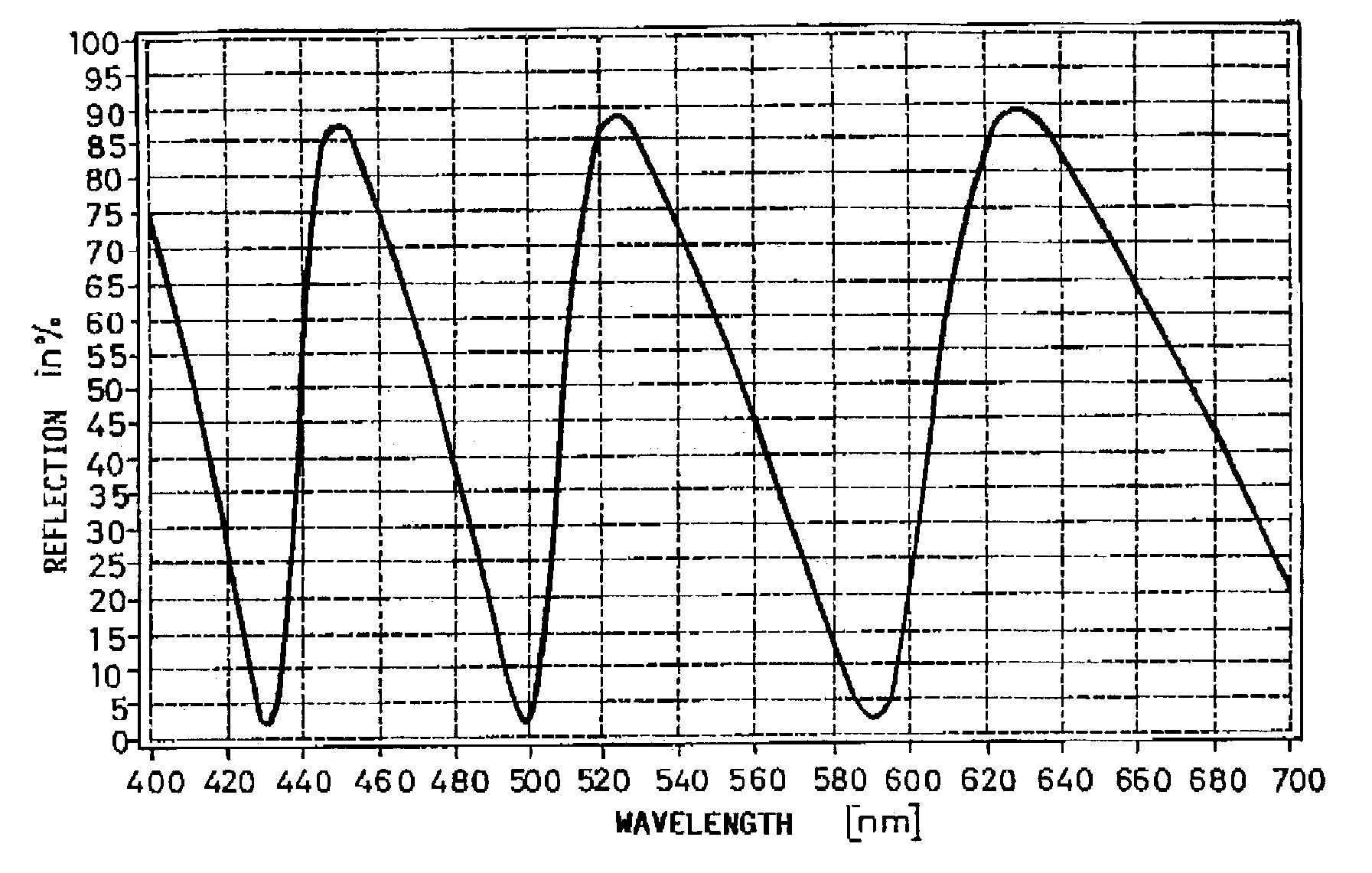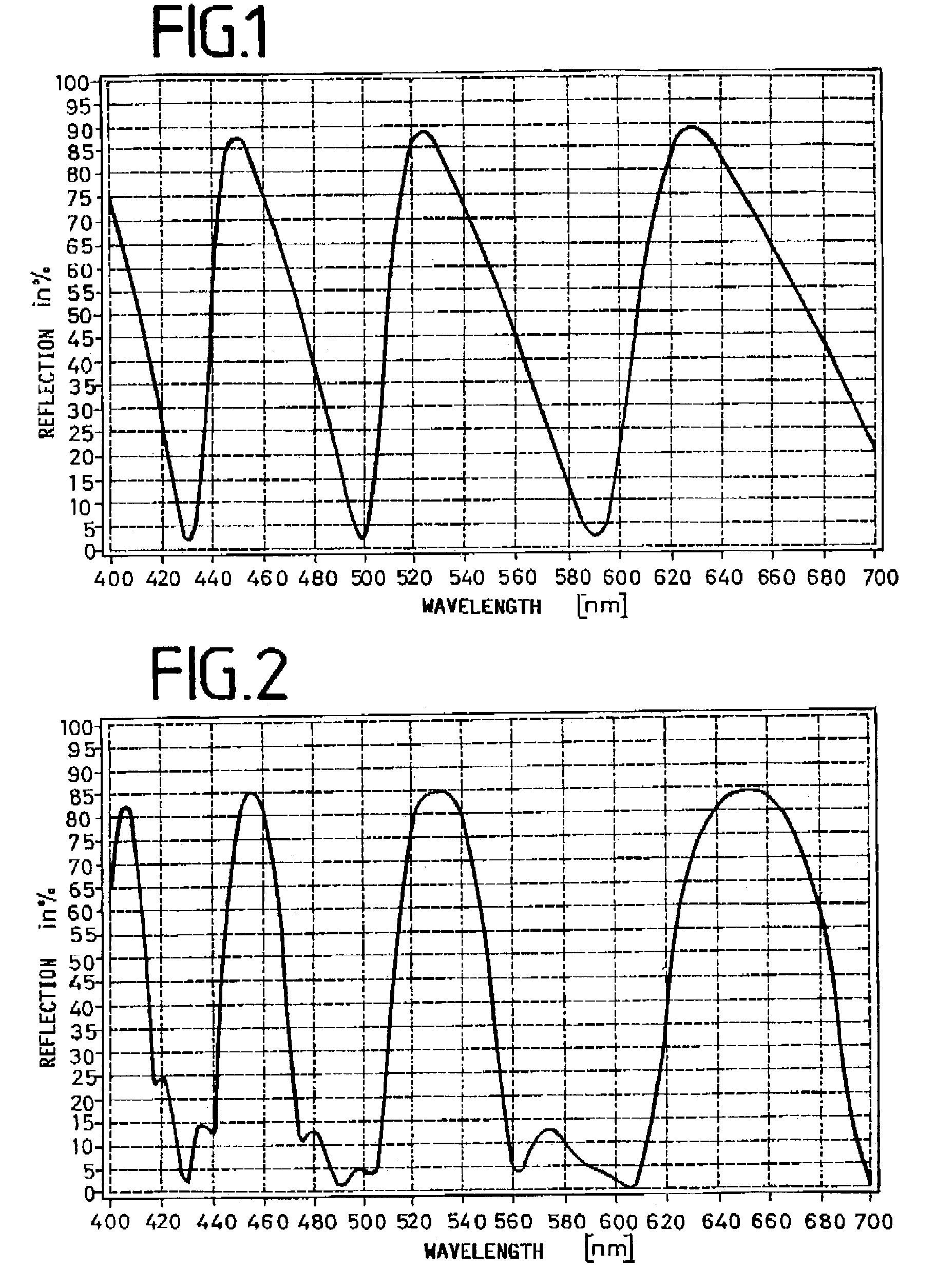Material with spectrally selective reflection
a technology of selective reflection and material, applied in the direction of mirrors, instruments, spectral modifiers, etc., can solve the problems of superfluous production of fully dielectric layer systems, unsuitable laser projection screens, and significant higher production costs of five-layer systems than the production of three-layer systems. achieve cost-effective production, high refraction index, and cost-effective
- Summary
- Abstract
- Description
- Claims
- Application Information
AI Technical Summary
Benefits of technology
Problems solved by technology
Method used
Image
Examples
Embodiment Construction
[0022]FIG. 1 depicts the reflection curve of a material comprised of three layers disposed one above the other, which is applied onto a substrate, for example onto glass or a synthetic material film. The first layer of this material, disposed directly on the substrate, is an aluminum layer having a thickness of approximately 100 nm, the second layer, disposed on the aluminum, is an SiO2 layer approximately 1030 nm thick, and the third layer, which is applied onto the SiO2 and which is in contact with air, is an NiCr layer approximately 30 nm thick. The first layer consequently is a layer highly reflecting over the entire range of visible light, while the second layer, which is disposed on the first layer, is a layer essentially non-absorbing over the entire range of visible light. Lastly the third layer is a layer, disposed on the second layer, which is partially transmissive over the entire range of visible light. This third layer is disposed above the other layers; the light to be...
PUM
 Login to View More
Login to View More Abstract
Description
Claims
Application Information
 Login to View More
Login to View More - R&D
- Intellectual Property
- Life Sciences
- Materials
- Tech Scout
- Unparalleled Data Quality
- Higher Quality Content
- 60% Fewer Hallucinations
Browse by: Latest US Patents, China's latest patents, Technical Efficacy Thesaurus, Application Domain, Technology Topic, Popular Technical Reports.
© 2025 PatSnap. All rights reserved.Legal|Privacy policy|Modern Slavery Act Transparency Statement|Sitemap|About US| Contact US: help@patsnap.com


